Kalamata Off-Season: The Most Beautiful Time to Discover...
Just two and a half hours...
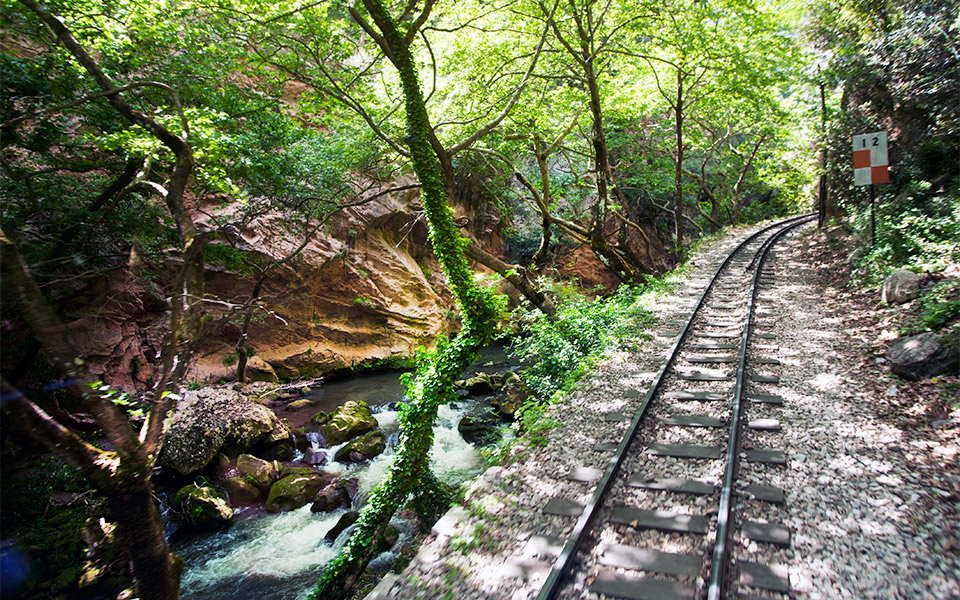
The Diakopto - Kalavryta railway line passes through landscapes of stunning natural beauty
© Clairy Moustafellou
Can a journey by train be a destination in and of itself? In the case of the historic line connecting seafront Diakopto in the northern Peloponnese with the mountain village of Kalavryta the answer is a definite yes, as the journey into the mountains makes for an enchanting short break.
The odontos or rack railway line (a rail system involving toothed rails and gears that allow trains to climb steep inclines) in the region of Achaia is one of the Balkans’ most unique due to its construction – it is the narrowest railway line in Europe with a width of only 75cm – and due to the exceptional beauty of the route. The track winds along the Vouraikos gorge and river, passing through dense forests of plane and fir trees, numerous narrow tunnels carved through the rock and crossing a total of 49 bridges.
Along the way openings to cave systems can be seen as well as impressive stalagmites. Some of these appear to recreate scenes like naturally formed dioramas, such as at the site known as the Dikastiria (or Courthouse) – so named due to the formations that resemble a judge presiding over a court.
The village of Diakopto from where the mountain railway line begins is 160km from Athens. The cost for a typical car journey including gas and tolls is about 50 euros return. A one-way rail ticket from Diakopto to Kalavryta costs 9.5 euros. Tickets for children between 4-12 years old are half-price.
Information & Reservations: Diakoptos Station, tel. +30 26910.43206 and Kalavryta station: +30 26920.23050
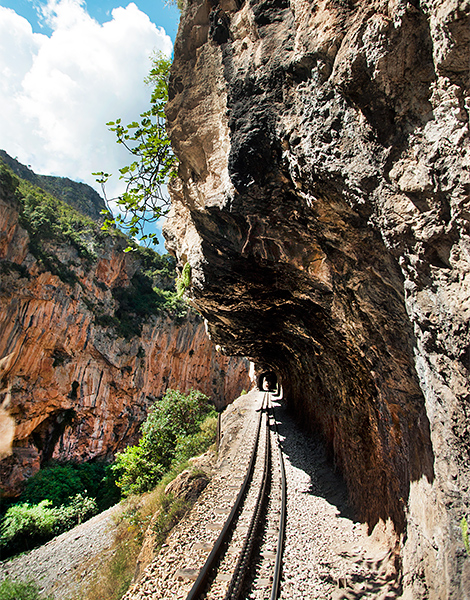
© Clairy Moustafellou
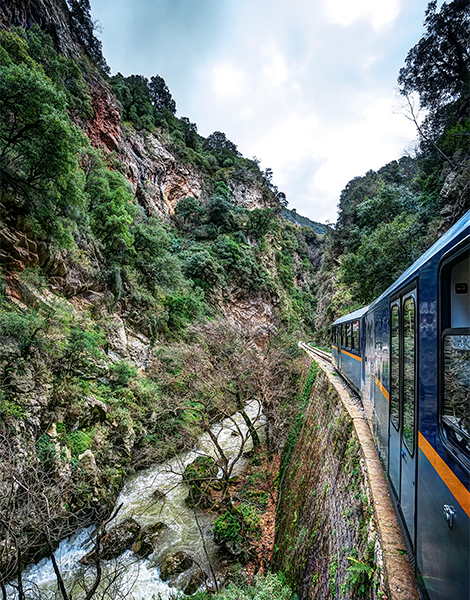
© Shutterstock
According to myth the gorge was formed when Hercules split a massive rock that was blocking his path to the sea and to his love, Voura, after whom the gorge and river are named. Together with Helmos mountain, the gorge forms part of a protected national park with a large number of endemic species of plants. 27 of these are endemic to the Peloponnese, 90 are endemic to Greece and 5 are unique to the mountain of Helmos itself.
The ecosystem is also rich in wildlife, with otters, bats, frogs, terrapins, golden eagles and kestrels among the animals to be found on the slopes of Helmos. In the alpine meadows various species of colorful butterflies flutter among the wildflowers.
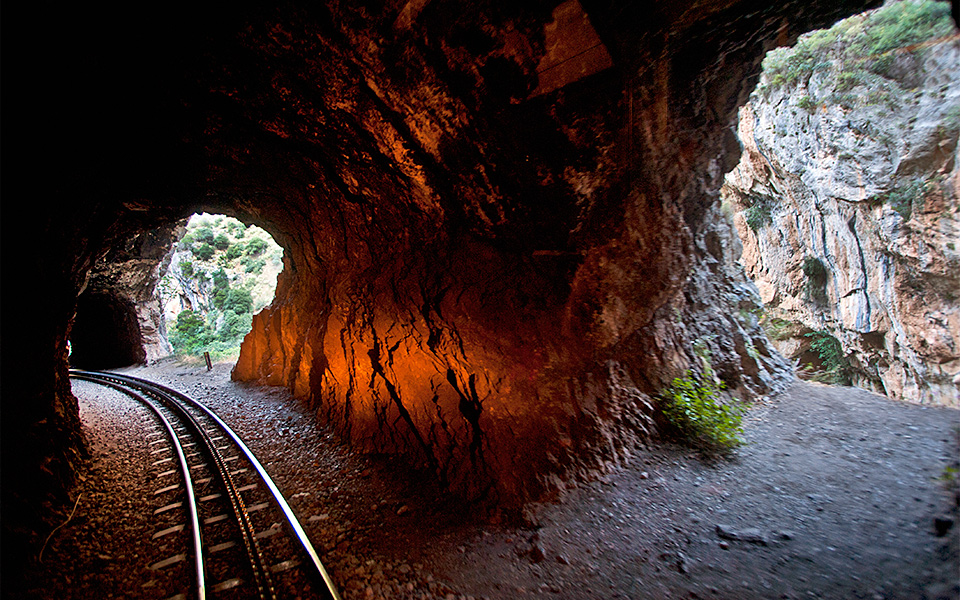
© Clairy Moustafellou
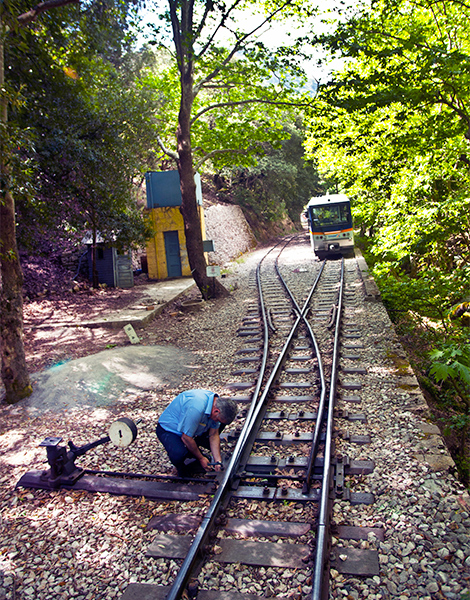
© Clairy Moustafellou
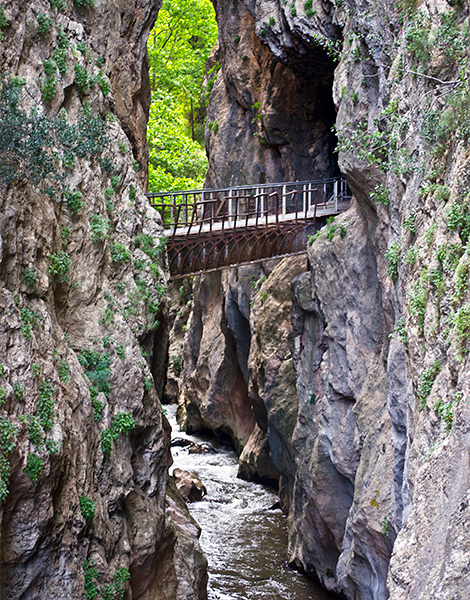
© Clairy Moustafellou
The rack railway was created towards the end of the 19th century under the premiership of Harilaos Trikoupis who sought to create a network of local railway lines branching off from main lines with a narrower track gauge for greater flexibility. The Diakoptos – Kalavryta railway was constructed by a French company employing Italian engineers who had experience from working on similar projects in the Alps. The inaugural journey on the route took place on March 10, 1896, and for the 121 years since trains have been making the journey daily throughout the year regardless of the weather. The track was upgraded in October of 2008 and in June of 2009 new Swiss-built trains were purchased for the route.
Kalavryta is located 22.4km from Diakopto, a distance it takes the train about one hour to complete. The first section of the line is relatively level before gradually the incline becomes steeper. Over the steepest sections cogs on the train engage with a central toothed ‘rack’ rail, pulling it up inclines and controlling its descent on downhill sections.
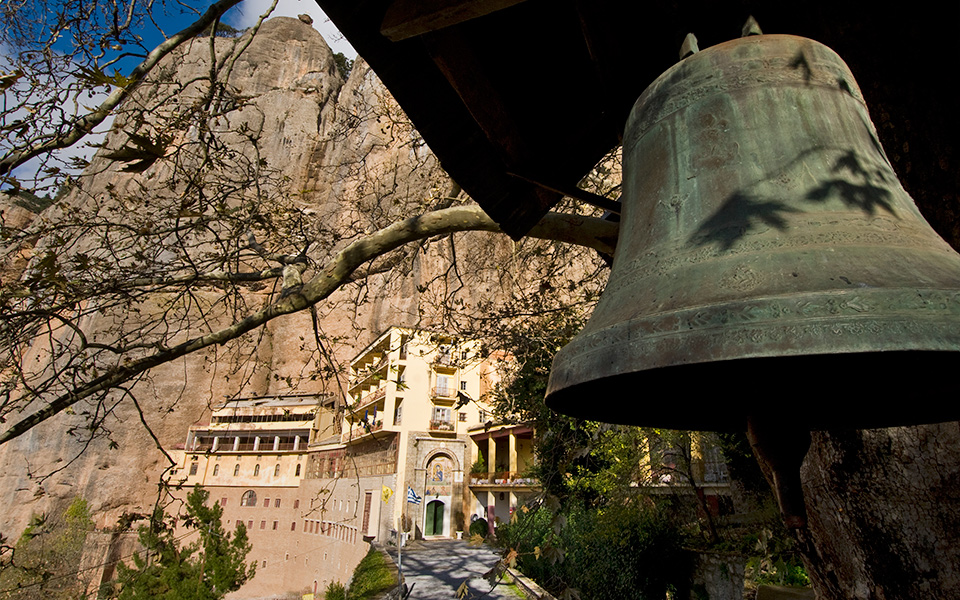
The Monastery of Megalo Spilaio
© Clairy Moustafellou
The train’s first stop is at the settlement of Niamata which is also where the gorge begins. The line continues on through this area of rugged natural beauty with waterfalls and mountain streams until it reaches ‘Portes’ (the ‘doors’) which is the narrowest and most impressive part of the route. Here the train enters the route’s most iconic tunnel at both ends of which huge old iron doors remain that were once only opened to allow the train’s passage, closing off the route to walkers.
The rack system is engaged once more to reach the next station of Mega Spilaio (Great Cave) in the village of Kato Zachlorou with its tavernas and guesthouses adjacent to the tracks. From here the monastery of Megalo Spilaio is reachable via a one hour hike.
After Kato Zachlorou the route becomes gentler again and the train passes through lush forests interspersed with mountain streams and picturesque stone-built houses before coming to the penultimate stop of Kerpini. Finally the train pulls into the terminal station at Kalavryta 750m above sea level.

The mountain village of Kalavryta
© Clairy Moustafellou
Kalavryta is seen by many in Greece primarily as a winter destination thanks to the nearby ski resort. However it is well worth visiting in the spring and summer to enjoy the serenity and natural beauty of this historic mountain village of the Peloponnese. Having reached the stone-built station, you can stop and have coffee at the cafe under the plane trees or head to the main square and pedestrianized high street which make up the central backbone of the village. Here you will find numerous shops selling traditional products as well as a number of tavernas and cafes.
At the start of the high street is the Municipal Museum of the Kalavrytan Holocaust, one of the town’s most important monuments, housed in the former elementary school building. It was in the courtyard of the school that on December 13, 1943 Nazi soldiers rounded up the local population and separated all of the boys and men aged between 13 – 65. They were subsequently taken to nearby Kappi Hill and executed. The site of the execution together with a monument to the slain is located on the road towards the ski resort, about 500m from the center of the village.

Victims of the Nazi massacre are memorialized at the Kalavrytan Holocaust Museum
© Clairy Moustafellou

© Clairy Moustafellou
About 17km from Kalavryta is the impressive Limnes Cave, a rare natural wonder with bizarre stalactite formations and curious chambers in which fossilized human and animal remains have been found, including the bones of a species of hippopotamus. The cave is named after its multiple lakes which are spread over several distinct levels – a rarity anywhere in the world.
Nature lovers should also hike to the imposing Neraidorahi Ridge of Mount Helmos. Here at an altitude of 2,100m at a position known as Ydata Stygos is an impressive, 200m tall waterfall which cascades into the river Krathi. In the plane tree forest of Helmos you will also find the springs of Aroaniou and Ladona rivers as well as the beautiful lakes of Ladona and Tsivlou.
The more adventurous can also hike the Vouraikos ridge by foot, walking alongside the train tracks. The trek takes about 6 hours whereas the reverse uphill journey takes about 7-8 hours.
WHERE TO STAY
In Kalavryta
In Zachlorou
WHERE TO EAT
In Kalavryta
FOR COFFEE AND SWEETS
In Kalavryta
Just two and a half hours...
Anyone who has visited Tsintzina, the...
Discover five mountain destinations where crisp...
A springtime haven of wildlife, scenic...